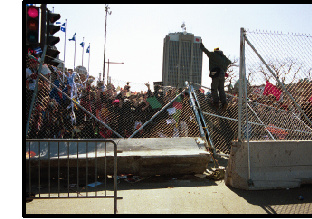
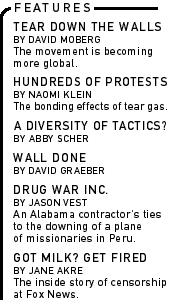
|
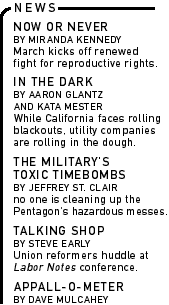
|
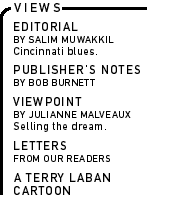
|
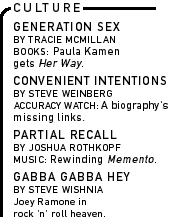
|
| |
|
|
|
Before Quebec, the debate about violent-versus-nonviolent tactics was pretty low-key After Quebec, there will be no way to avoid taking a stand, one way or another. As has been the case for months in the United States, the debate has been defined by those arguing for violent resistance to corporate-driven schemes. Though a tiny minority in number, they have energy and novelty on their side, forcing the majority to contend with their argument that nonviolence is tired, old and ineffectual. Even as some 50,000 unionists, environmentalists, youth and women's groups marched in an enormous demonstration below, a battle raged on the bluffs of Boulevard Rene Levesque and Cote d'Abraham on April 21, as hundreds of young people charged the 2.5 mile chain-link fence "protecting" the heads of state and corporate elites who had come for what should have been a massive photo opportunity. Besides smiling for the cameras, little work was actually required of these men because their trade ministers had already negotiated the joint statement on the Free Trade Area of the Americas weeks before. But the public relations battle was won by their nonviolent and violent opponents, as
"The violent response to protesters does not lend credibility to government reassurances that labour, environmental and democracy concerns about the proposed FTAA will be addressed," trumpeted a column in Toronto's Globe and Mail. The division between the peaceful march and the bluffs was not as sharp as might appear to the TV cameras. As in Seattle, unionists peeled off from the march to join the young people at the fence, and thousands of peaceful opponents of the summit crowded the bluffs, pushing close to the fence and engaging in a sit-in that police tear gassed as readily as the fence fighters. Despite the riot police's ready use of water cannons, tear gas and even rubber bullets (a first in Canada), it was hard to keep the Canadian Auto Workers on the peaceful march, reported an activist from that union. "They see that some of the violent demonstrators have been successful," she told the Montreal Gazette. Quebec was the latest in a series of escalating protests that have engulfed Canada since 1996. That year, some 300,000 peaceful demonstrators protested in the streets of Toronto against the conservative government. From there, police, and some demonstrators, have grown increasingly violent, starting with the Vancouver Asia-Pacific Economic Cooperation (APAC) meetings in 1997, where police pepper-sprayed demonstrators, into the small protest against the Organization of American States meeting in Windsor, Ontario in the spring of 2000, where police aggressively and illegally arrested protesters. Around the same time, members of the Ontario Coalition against Poverty rumbled with Toronto police after the right-wing legislature refused to allow the group to speak. In Quebec, powerful unions refused to march to the bluffs because they did not want anything to do with the anarchists planning more militant tactics. A coalition of 34 Quebec groups worked with the unions to organize the nonviolent "People's March" and to provide accommodations, a "welcome center" and other support for the thousands of protesters coming to the city. But the People's March lasted for what felt like forever, ending up in a parking lot with no place to sit and rest. Why not link hands and encircle the fence with miles of unionists and environmentalists, side by side, suggested Village Voice writer Sarah Ferguson. Instead, people just stood around or walked back. The lack of creative ideas stood in stark contrast to the commitment of those charging the fence despite unbearable tear gas attacks. On Sunday morning, activists awoke to find that the peaceful, "liberated" area below the bluffs had been trashed. And not only bank windows were smashed. (One on the bluffs was scrawled with the plaintive, "We're sorry, we tried to stop them.") The army-navy store where many of the demonstrators had bought gas masks and other equipment to crash the barricades also had its windows bashed in. "You don't trash your own area," complained one veteran '60s radical. But Howl, an anarchist who trained young people at Bard and Vassar in direct action before the demonstrations, reported that at the sessions, "We got into property destruction, which I think is bullshit to call violence." In the student debates of violence versus nonviolence she led, Howl said, "People are recognizing the difference between violence and nonviolence, and right and wrong. I think people are exploring more of the differences between those things. They also are debating what violence is, defining it as anywhere from eating meat to bearing arms. I thought a lot about why it's OK to have a violent struggle in other places but not here." I quoted to her some words I once heard from an older anarchist in another context: "As an activist, I want to disarm the violence of the situation so people can act and another process can begin. Any violence we bring to that situation helps the people in their unthinkable violence toward us. As anarchists we are asking the imagination to take power, and violence is intimidating the imagination and not linked to people's liberation." "That statement bugs me because it makes a huge assumption about time," Howl replied. "For most people [the social crisis is] really urgent and really immediate. I think that's the kind of attitude that turns off people of color and working-class folks because of the perceived wishy-washy nature of anarchism. As much as some of us would like to process shit forever, we need to take action." Howl also dismissed arguments that violence interferes with organizing a broader political base or produces a vanguard-style politics. Nonviolence can also be vanguardism, she said, and many of the people of color she organizes want "action," not another demonstration. She echoed the phrase heard from many other activists at this moment: We need a "diversity of tactics." A diversity of tactics reaches those who want to express themselves through petitions and voting as well as more militant folks. But violence can be demobilizing, as the experienced '60s activist saw in his days at the University of Wisconsin. He recalls that when anti-war activists bombed the Army/Math building that was supporting bombing raids of Vietnam, a graduate student was killed, and then the broader anti-war coalition fractured and dissolved. Is Quebec, with its uneasy alliance of a few Molotov cocktail throwers,
hundreds of fence attackers, and thousands of nonviolent protesters,
a wonderful demonstration of "a diversity of tactics"--or a turning
point where the gap between tactics yawns larger? Abby Scher is director of Independent Press Association- New York, and formerly served as co-editor of Dollars and Sense magazine.
|


